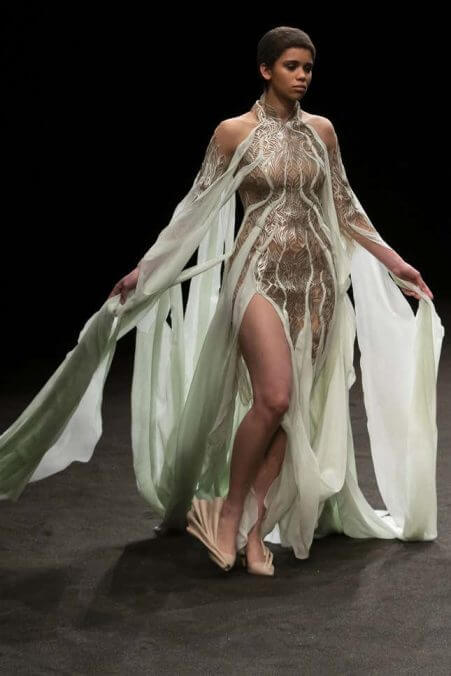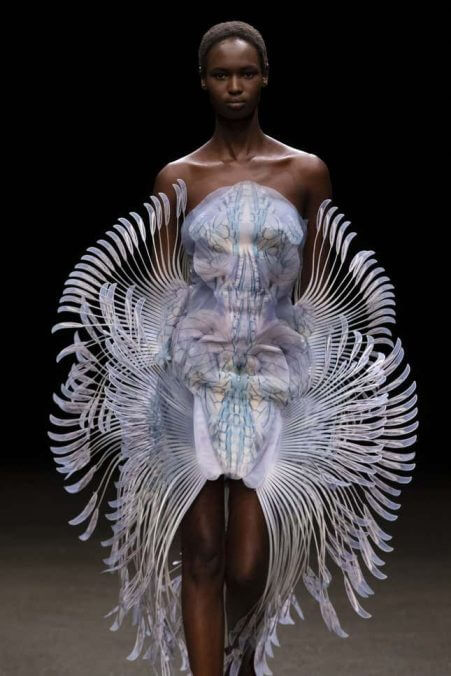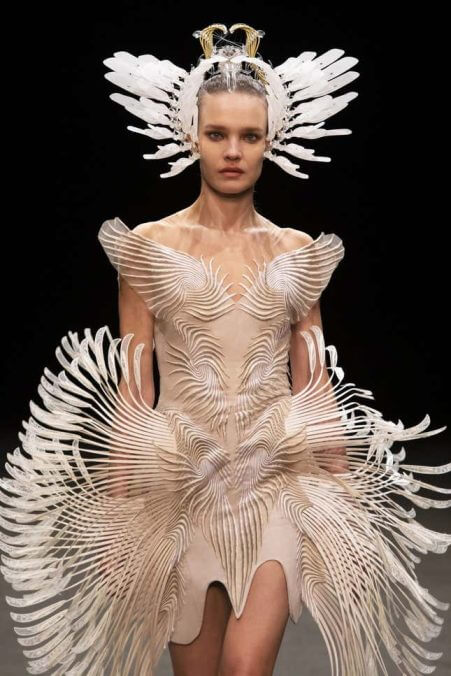

Dutch fashion designer Iris Van Herpen has found inspiration in many esoteric things, down to the most basic building blocks of our molecular biology as a species. But few couture collections have been as outwardly striking as this season’s fungi-rooted frilly silhouettes, part of her Spring 2021 couture show. Or, I just haven’t seen fashion in a very long time.
Vogue reports the couturier pulled from the deepest darkest trenches of the ocean floor while constructing her Spring 2021 Couture show, with dresses and trains and capelets and shoulder ruffles made from fabric by Ocean Plastic, a company which “upcycles” marine waste like plastic bottles and other garbage. Herpen told Vogue: “Basically, there’s not a lot of reason not to use sustainable materials anymore, other than changing your mindset.”
The Dutch fashion freakazoid—which I say lovingly—was also touched by Entangled Life, a book by expert Martin Sheldrake on the global network of mushrooms and fungi that sustains all life on Earth. Touching, if a bit strange. In my brief research into his work, I found the below video, where he tends to, and then eats, the mushrooms that ate his book.
I hope he and Herpen have fucked at least once.
-

-

-

-

-

-

-

-

-

-

-

-

-

-

-

-

-

-

-

-

-

-

-

-

-

-

-

-

-

-

-

-

-

-

-

-

-

-

-

-













































